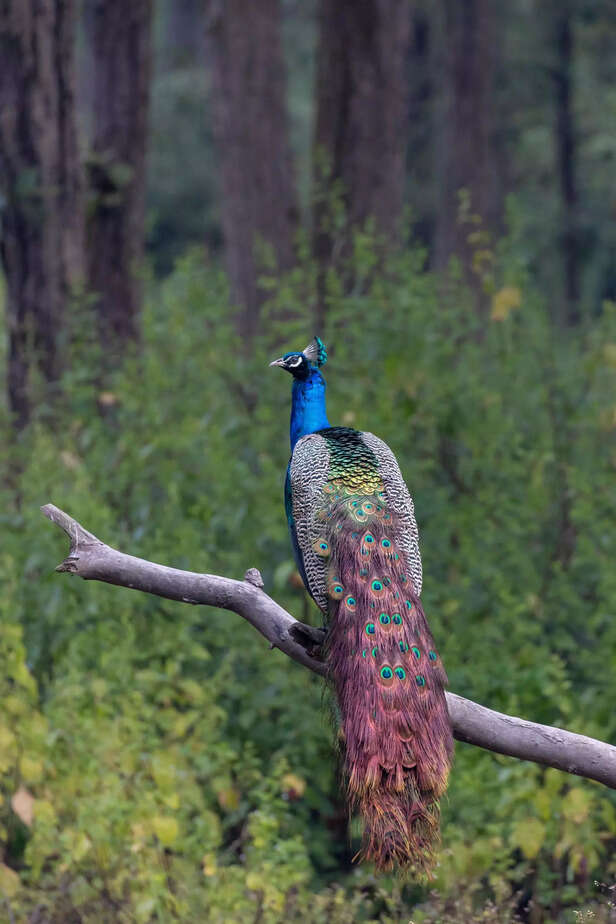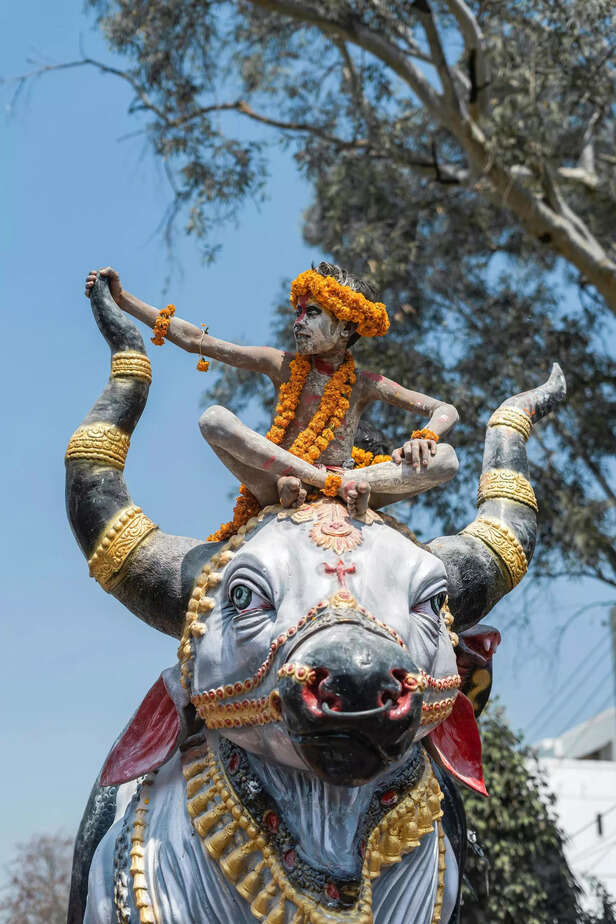We Pray to Animals And Then Wear Their Skin, Only in India?
Ankita Rai | Thu, 29 May 2025
India reveres animals as sacred, from worshipping snakes and cows to venerating elephants and monkeys in mythology. Yet, it simultaneously profits from their exploitation using their skins for fashion and industry. The piece explores the stark contradiction between spiritual devotion and commercial practices, touching on the leather trade, caste dynamics, and a growing ethical consciousness. As traditions persist, a slow shift toward cruelty-free alternatives and compassionate choices is gaining ground. It raises a deeper question: can true devotion exist without ethical consistency? And can India align its spiritual values with modern compassion?
( Image credit : Pexels )
Photo:
India is a land of deep reverence for gods, ancestors, rivers, trees, and animals. It’s not unusual here to see people folding their hands before a cow, offering milk to snakes, or feeding bananas to monkeys outside temples. The spiritual connection between humans and animals runs centuries deep, rooted in mythology, rituals, and cultural practices. But step into a bustling market or a high-end boutique, and you’ll find belts of buffalo hide, purses of snakeskin, and boots made of cow leather. Some of these may very well come from the same animals that were worshipped only days ago. How do we reconcile this contradiction? How can a culture that kneels before animals also profit from their slaughter? Welcome to the Indian paradox where the sacred and the commercial often walk hand in hand, and reverence tends to have a blind spot.

India’s connection with snakes is marked by awe and spiritual symbolism. Lord Shiva is often depicted with a cobra around his neck, and the Naga deities are revered during festivals like Nag Panchami. In villages across India, people worship clay snake idols and offer turmeric, milk, and prayers to living cobras. Historically, the Naga cult promoted a harmonious relationship between humans and serpents. Yet until recent years, snakes were routinely killed for their exotic skins, turned into luxury shoes and handbags for both domestic use and international export. In 2017, India officially banned the import of snakeskin and other reptile furs. But illegal trade and counterfeit products still persist. We glorify serpents in temples and then wear their remains as accessories. It raises a difficult question—are we worshipping or just romanticizing?

No animal holds a more revered place in Indian society than the cow. Considered “Gau Mata,” the cow symbolizes gentleness, fertility, and life itself. In many Indian states, cow slaughter is illegal, and harming them is seen as a moral and legal transgression. Yet India is also one of the largest producers and exporters of leather, and a significant portion of it comes from cattle. The narrative that this leather is sourced only from animals that die natural deaths is often more a loophole than a truth. So while cows roam freely outside temples and are adorned during festivals, their skins might still end up on handbags, jackets, or car seats. For a country that venerates the cow, this selective morality remains largely unexamined.

Hindu mythology celebrates many animals as sacred. The elephant, as Lord Ganesha, symbolizes wisdom. The monkey, represented by Hanuman, stands for devotion and strength. Garuda, the eagle, is the divine mount of Vishnu. Nandi, the bull, is Shiva’s loyal companion. Even animals like the peacock, lion, dog, and mouse hold symbolic religious value. Despite their divine associations, these creatures often suffer in the real world. Elephants are chained and forced to perform at temples or festivals. Monkeys are captured and used in street shows. Stray dogs are routinely mistreated or poisoned. The treatment of these sacred beings seems to depend more on context than compassion.

Leather in India isn't just a commodity it’s a caste issue. In the traditional Hindu hierarchy, working with animal hide was considered ritually impure. This task fell to Dalits, formerly known as “untouchables,” who were marginalized for merely handling dead animals.
Despite this stigma, India’s leather industry has grown into a multi-billion-dollar sector, employing over 4 million people. Ironically, the same material once deemed polluting has become a symbol of luxury and export success. The contradiction here isn’t just spiritual it’s social. The intersection of caste, commerce, and cruelty adds another layer of complexity to the story of animal use in India.

Most Indians grow up immersed in rituals offering food to temple cows in the morning and putting on leather shoes for school in the afternoon. The contradiction is so normalized that it barely registers as one. But things are beginning to shift. Awareness about animal welfare is rising. Organizations like PETA India and Blue Cross are pushing for change. Vegan alternatives to leather made from mushrooms, pineapples, cactus, or coconut waste are entering the market. Conscious brands are beginning to prioritize cruelty free and eco-friendly products. Still, change is slow. Rituals remain intact, but ethics are only just starting to catch up.

Ancient Indian scriptures preach ahimsa—non-violence and respect for all living beings. They remind us that divinity resides in every form of life. So why do we wash a stone bull with milk in a temple but ignore the pain of a real bull in a slaughterhouse? It’s time to ask harder questions. Faith must evolve from mere ritual to conscious action. It’s not only about what we worship but also about how we live. What we choose to wear, eat, and support are all reflections of what we truly believe. True devotion doesn’t end at the temple gate it must extend to our everyday choices.

Is India the only place where animals are both revered and exploited? No. Many cultures glorify animals in myth and mistreat them in practice. But in India, where spirituality touches nearly every aspect of daily life, the contradiction feels especially stark. This isn’t a call to abandon faith or industry. It’s a call to align values with action. To ensure that our reverence for animals isn’t just symbolic but sincere.
If animals are sacred, then they deserve more than a spot in our stories. They deserve compassion, dignity, and protection in real life.
Only then can our worship be called honest. Only then can we truly honor the divine in them and within ourselves.
Unlock insightful tips and inspiration on personal growth, productivity, and well-being. Stay motivated and updated with the latest at My Life XP.
Snakes in Shrines, Skins in Shops

snake skin is banned in India
( Image credit : Pexels )
India’s connection with snakes is marked by awe and spiritual symbolism. Lord Shiva is often depicted with a cobra around his neck, and the Naga deities are revered during festivals like Nag Panchami. In villages across India, people worship clay snake idols and offer turmeric, milk, and prayers to living cobras. Historically, the Naga cult promoted a harmonious relationship between humans and serpents. Yet until recent years, snakes were routinely killed for their exotic skins, turned into luxury shoes and handbags for both domestic use and international export. In 2017, India officially banned the import of snakeskin and other reptile furs. But illegal trade and counterfeit products still persist. We glorify serpents in temples and then wear their remains as accessories. It raises a difficult question—are we worshipping or just romanticizing?
The Sacred Cow and the Leather Market

the paradox of cow worshipping and leather market
( Image credit : Pexels )
No animal holds a more revered place in Indian society than the cow. Considered “Gau Mata,” the cow symbolizes gentleness, fertility, and life itself. In many Indian states, cow slaughter is illegal, and harming them is seen as a moral and legal transgression. Yet India is also one of the largest producers and exporters of leather, and a significant portion of it comes from cattle. The narrative that this leather is sourced only from animals that die natural deaths is often more a loophole than a truth. So while cows roam freely outside temples and are adorned during festivals, their skins might still end up on handbags, jackets, or car seats. For a country that venerates the cow, this selective morality remains largely unexamined.
Sacred Animals, Selective Compassion

peacock is considered sacred in India
( Image credit : Pexels )
Hindu mythology celebrates many animals as sacred. The elephant, as Lord Ganesha, symbolizes wisdom. The monkey, represented by Hanuman, stands for devotion and strength. Garuda, the eagle, is the divine mount of Vishnu. Nandi, the bull, is Shiva’s loyal companion. Even animals like the peacock, lion, dog, and mouse hold symbolic religious value. Despite their divine associations, these creatures often suffer in the real world. Elephants are chained and forced to perform at temples or festivals. Monkeys are captured and used in street shows. Stray dogs are routinely mistreated or poisoned. The treatment of these sacred beings seems to depend more on context than compassion.
Leather, Labor, and Caste Contradictions

leather industry
( Image credit : Pexels )
Leather in India isn't just a commodity it’s a caste issue. In the traditional Hindu hierarchy, working with animal hide was considered ritually impure. This task fell to Dalits, formerly known as “untouchables,” who were marginalized for merely handling dead animals.
Despite this stigma, India’s leather industry has grown into a multi-billion-dollar sector, employing over 4 million people. Ironically, the same material once deemed polluting has become a symbol of luxury and export success. The contradiction here isn’t just spiritual it’s social. The intersection of caste, commerce, and cruelty adds another layer of complexity to the story of animal use in India.
Where Do Devotion and Ethics Meet?

devotion has various forms here in India
( Image credit : Pexels )
Most Indians grow up immersed in rituals offering food to temple cows in the morning and putting on leather shoes for school in the afternoon. The contradiction is so normalized that it barely registers as one. But things are beginning to shift. Awareness about animal welfare is rising. Organizations like PETA India and Blue Cross are pushing for change. Vegan alternatives to leather made from mushrooms, pineapples, cactus, or coconut waste are entering the market. Conscious brands are beginning to prioritize cruelty free and eco-friendly products. Still, change is slow. Rituals remain intact, but ethics are only just starting to catch up.
What Do We Truly Believe?

a devotee and his animal
( Image credit : Pexels )
Ancient Indian scriptures preach ahimsa—non-violence and respect for all living beings. They remind us that divinity resides in every form of life. So why do we wash a stone bull with milk in a temple but ignore the pain of a real bull in a slaughterhouse? It’s time to ask harder questions. Faith must evolve from mere ritual to conscious action. It’s not only about what we worship but also about how we live. What we choose to wear, eat, and support are all reflections of what we truly believe. True devotion doesn’t end at the temple gate it must extend to our everyday choices.
A Nation at a Crossroads

there is a paradox that still continues in this nation
( Image credit : Pexels )
Is India the only place where animals are both revered and exploited? No. Many cultures glorify animals in myth and mistreat them in practice. But in India, where spirituality touches nearly every aspect of daily life, the contradiction feels especially stark. This isn’t a call to abandon faith or industry. It’s a call to align values with action. To ensure that our reverence for animals isn’t just symbolic but sincere.
If animals are sacred, then they deserve more than a spot in our stories. They deserve compassion, dignity, and protection in real life.
Only then can our worship be called honest. Only then can we truly honor the divine in them and within ourselves.
Unlock insightful tips and inspiration on personal growth, productivity, and well-being. Stay motivated and updated with the latest at My Life XP.
Frequently Asked Questions (FAQs)
- Why are animals worshipped in India?Animals are seen as sacred due to their association with Hindu deities and spiritual symbolism.
- Is it legal to use animal skins like snakeskin in India?No, the import and trade of snakeskin and certain reptile furs are banned in India.
- How is the Indian leather industry linked to caste?Traditionally, leather work was assigned to Dalit communities, reinforcing caste-based occupational divisions.









